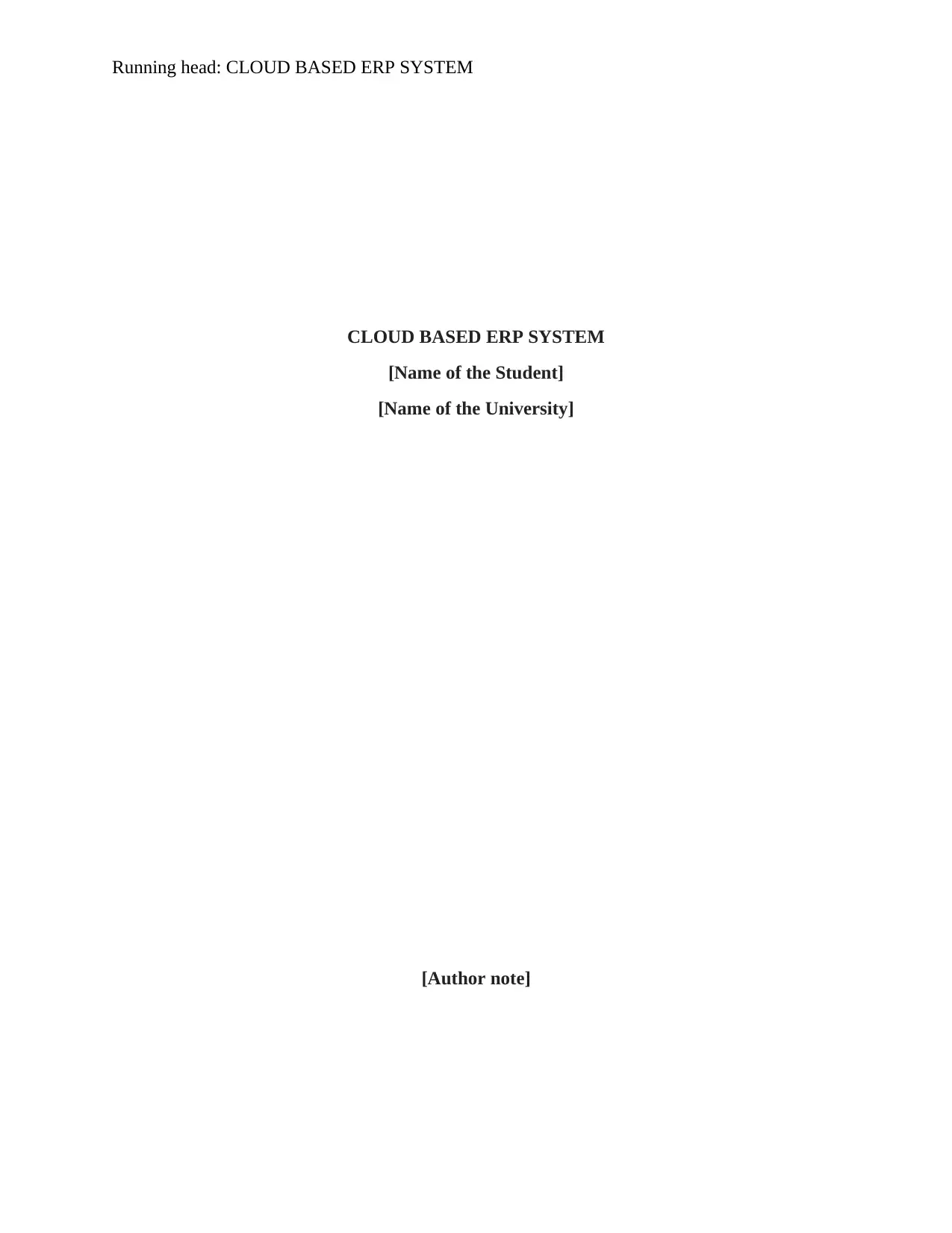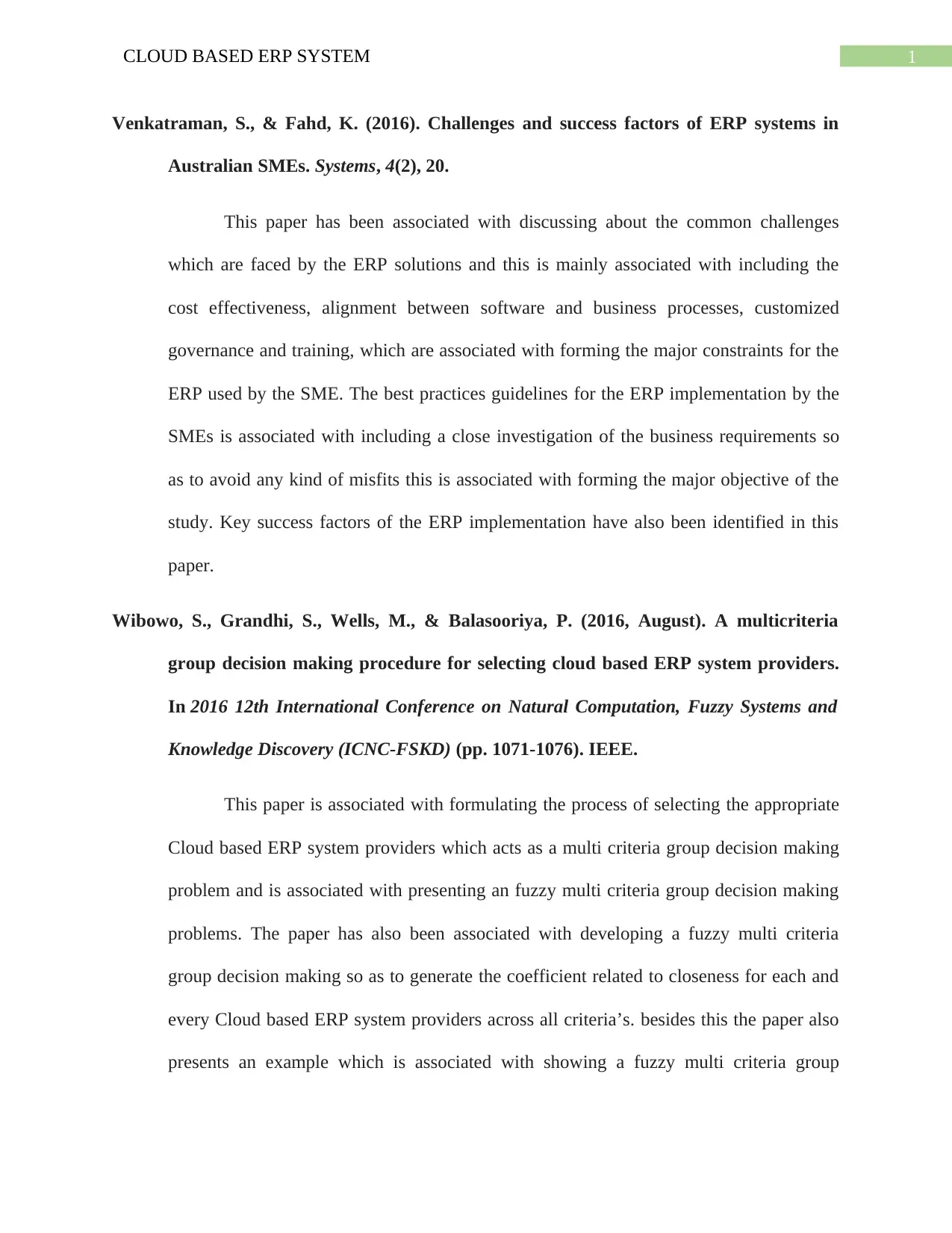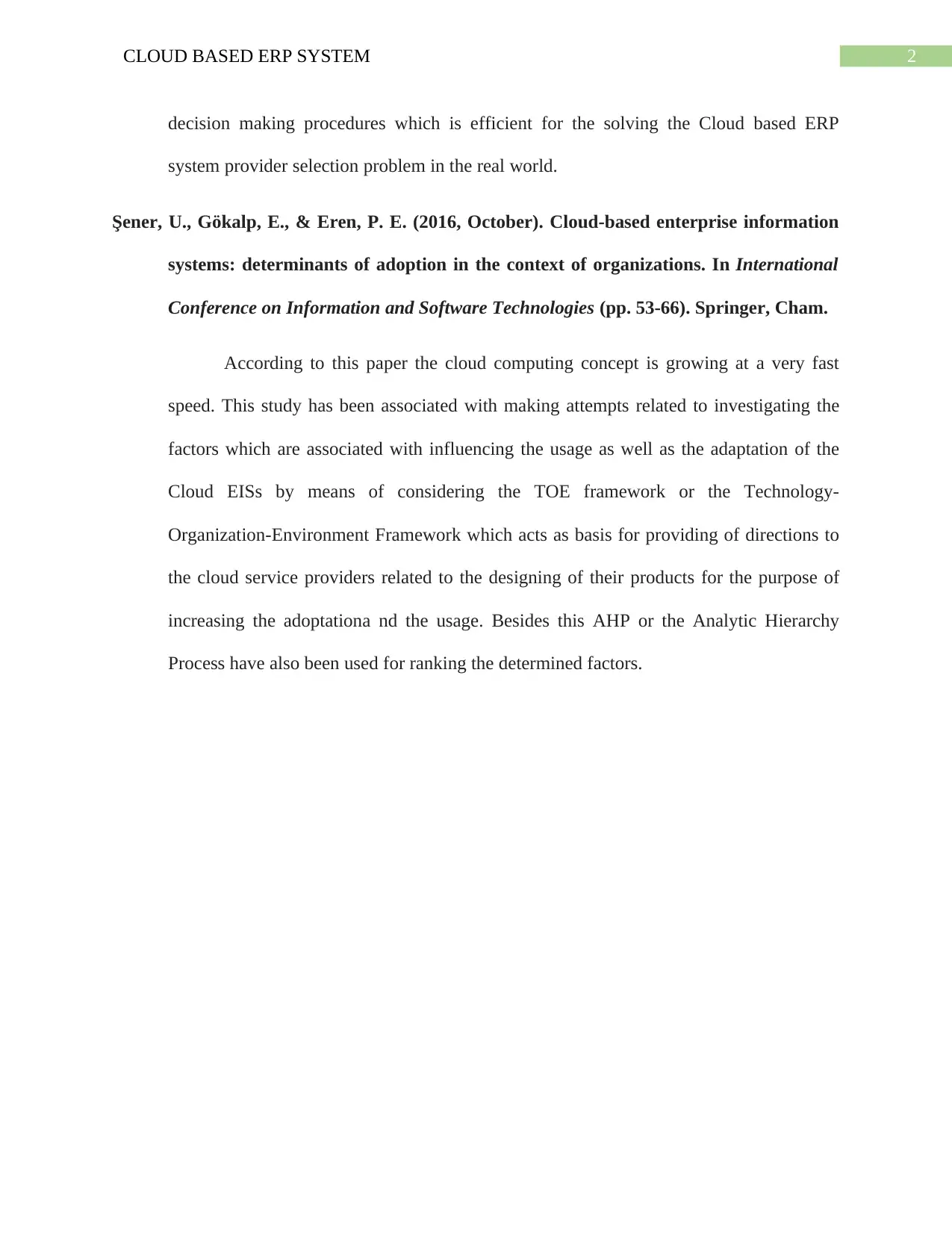Business Analyst Enterprise Systems Course Portfolio Analysis
VerifiedAdded on 2022/11/13
|3
|520
|168
Portfolio
AI Summary
This portfolio, created by a Business Analyst, synthesizes learning from an Enterprise Systems course. It covers key aspects of Enterprise Resource Planning (ERP) systems, addressing challenges such as cost-effectiveness, alignment with business processes, and the importance of customized governance and training. The portfolio highlights best practices for ERP implementation, emphasizing the need for a close investigation of business requirements to avoid misfits. It explores the selection of cloud-based ERP system providers using multi-criteria decision-making processes and examines factors influencing the adoption of cloud-based Enterprise Information Systems (EISs) through the Technology-Organization-Environment (TOE) framework. The portfolio integrates multiple information sources to analyze Enterprise Systems, describes their role within IT infrastructure, and identifies relevant considerations for implementation, all presented in a coordinated and coherent manner. This document is designed to demonstrate the practical application of course concepts and is intended for sharing knowledge within the organization. The portfolio draws upon at least ten references to support its analysis and recommendations, showcasing the integration of various information sources. This document is contributed by a student to be published on the website Desklib, a platform which provides all the necessary AI based study tools for students.
1 out of 3










![[object Object]](/_next/static/media/star-bottom.7253800d.svg)